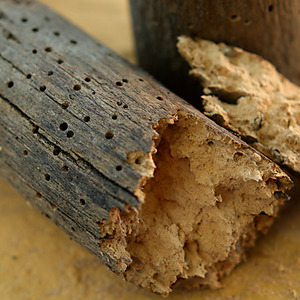I want to test all the electrical circuits before the drywall is hung for 2 reasons, firstly to make sure it’s been done correctly and secondly so that if it doesn’t work after the drywall then I know they hit a wire with a screw. How do I go about testing each circuit before they’re hooked up to the panel? What do I need? I have seen an electrician use a battery (like a small car battery), a bell and some wire but I can’t remember what went where!
Thanks


















Replies
It probably all works fine. All you need to do is visually inspect each circuit to see that each location is fed per plans. The best thing you can do is make sure that all of your wire, pipe, etc., is either deep enough into the framing, or well protected by nail plates. The drywall screws are always either 1-1/4" or 1-5/8", and they penetrate 1" or less into the framing. Code depth for unprotected wiring thru studs is 1-1/4", I believe. Drywall screws are very unlikely to penetrate nail plates anyway, it's the gun nails you need to watch out for. You should talk to the trim guys about what they are shooting and and thru what thickness of material.
Now.... if this is wiring you did yourself, and you're not sure you did it right, then buy a circuit tracer and make sure, or have an electrician check it out for you.
I agree with David, except the circuit tracer.
They won't show a problem with the cable.
If you want to get a "test light". One of the pocket screw driver things with a battery and light in it. It has a problem and clip lead.
Then with the other end of the cable open try all 3 combinations (hot-neutral, hot-ground, neutral-ground). They should all show open. Then connect all 3 toegether at the far end. Then repeat the test. They should all show continuity.
Still not a perfect test. Need to get a megger to find some problems. But it would probalby find 99% of them.
But really problems are rare unless the wires where miss run in the first place.
I was under the impression that a circuit tracer would tell you if the wires are continuous, but you're saying that's not the case. When I have seen electrician's use what I am thinking of, they clip a little box with a pair of leads to the wire at the far end and then have a tester that beeps when they touch a pair of probes to the near end. Usually the electrician stands at the panel with the probes, and the helper goes from room to room. This is done before the breakers are made up, although I guess it could be done with the panel shot off. Lots easier to do before the romex is stripped out.
Those are used to ID which cable is which.They work by electric field. Now it would probably show a cable that was clearly cut in two.But say a nail in the cuts a wire and leave a few thousands gap some one that has used that particular tracer on hundred and hundred of similar jobs *might* tell the difference. But I would not bet on it.It would detect a short, but only if it was the two of the 3 (or 4 wires) in the cable that the tone generator was connected to.
@@ they clip a little box with a pair of leads to the wire at the far end and then have a tester that beeps when they touch a pair of probes to the near end.
Yes, we have one in the Habitat shop. For ringing out the circuits.
It's a box with a doorbell and transformer and an AC plug plus a long pair of leads. You need to supply the 110.
Plug in the box, clip to the leads of that circuit at the panel and then go short out wires. No probe or testers. Just touch the wires and ring the bell. Or not. When you hear the bell, you know something works to that point.
Do you need to use it? There have been several projects where we wished we had. After the drywall is up and the place painted, it's not a good time for issues.
You say you turned on the hall light and the bathroom fan started instead?
The ToolBear
"Never met a man who couldn't teach me something." Anon.
It's like that commercial where the guy is flipping the unknown switch in his house and it's slamming the garage door on the lady's car three doors down.
I don't *think* I need one. I just pulled about 2000 feet of romex in my shop and hopefully I was paying attention the entire time.
Great Moments in Wiring -
We had one house where there were three switches at the top of the stairs.
Two turned on lights. The middle one? Nothing happened up or down. Some weeks later we found that the middle one turned on the light in the attic.
Duh! I would love an ever-burning attic light. Safety and economy.The ToolBear
"Never met a man who couldn't teach me something." Anon.
"I don't *think* I need one. I just pulled about 2000 feet of romex in my shop and hopefully I was paying attention the entire time.'Have you been fibbing to the "nice" people over in the JLC Electric Shop about only needing background information before you electrican shows?
Nope. I drilled all the holes, set all the boxes, and pulled all the wire. Sparky will make up the panel and install a few of the devices. I'll do the ordinary plugs and switches.
That sounds like a great use for the noisemaker from a defunct smoke detector. You could rig it in series with a 9 volt battery, no need for AC power.
-- J.S.
That would simplify things a bunch.
"Ring out, wild bells."The ToolBear
"Never met a man who couldn't teach me something." Anon.
Yeah, now I have to find where I put the dead smoke detectors in my junk.... ;-)
-- J.S.
dont forget the metal block plates on the 2x where the wire goes through, before the drywall